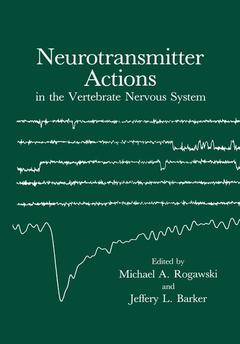Intercellular communication via bioactive substances occurs in virtually all multicellular systems. Chemical neurotransmission in the vertebrate nervous system represents a form of signaling of this type. The biology of chemical neurotransmission is complex, involving transmitter synthesis, transport, and release by the presynaptic neuron; signal generation in the target tissue; and mechanisms for termination of the response. The focus of this book is on one aspect of this scheme: the diverse electrophysiological effects induced by different neurotransmitters on targets cells. In recent years, astonishing progress has been made in elucidating the specific physiological signals mediated by neurotransmitters in the verte brate nervous system, yet, in our view, this has not been adequately recog nized, perhaps because the new concepts have yet to filter into neuroscience textbooks. Nevertheless, the principles of neurotransmitter action are critical to advances in many areas of neuroscience, including molecular neurobiol ogy, neurochemistry, neuropharmacology, physiological psychology, and clinical neuroscience. It was the need for a sourcebook that prompted us to engage a group of neurophysiologists to prepare the chapters in this volume. However, there was an additional reason for this book: more and more it seemed that the field, if not yet having reached maturity, at least was ap proaching adolescence, with strengths in some areas and healthy conflicts in others. At this stage of development a textbook can help to define a field, clarify problems to be resolved, and identify areas for future investigation.




